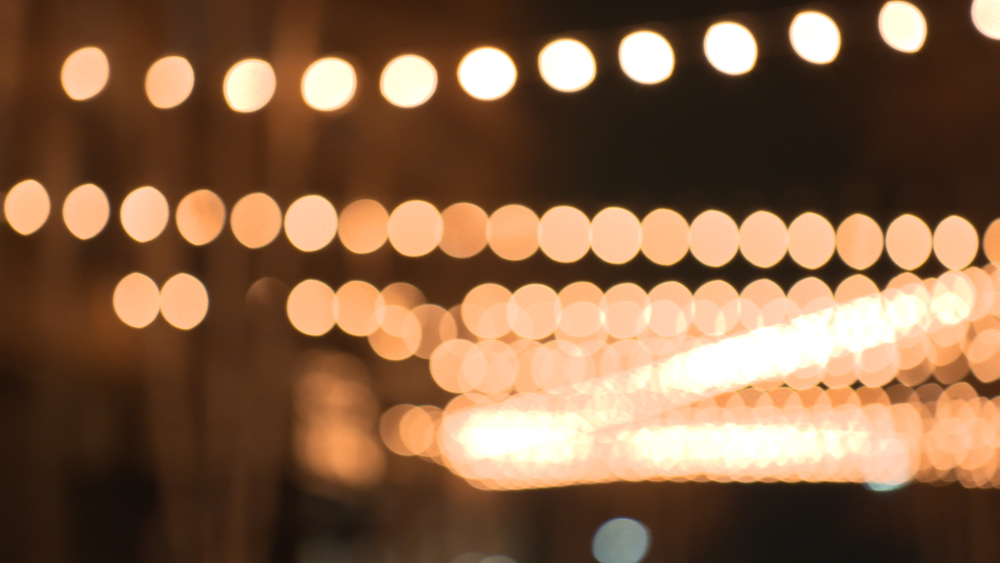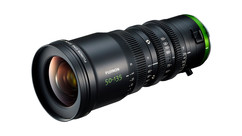Fujinon MK 18-55MM
| Zoom Factor | MSRP Price | Weight | Lens Mount | T* | Focus Rotation | Iris Blades | Front Diameter | Minimum Focus |
| 3x | $3,799 | 2.16 lbs | Sony E | T2.9 | 200° | 9 | 85mm | 2.8′ / 1.25′ @ macro |
BUILD AND FUNCTIONALITY
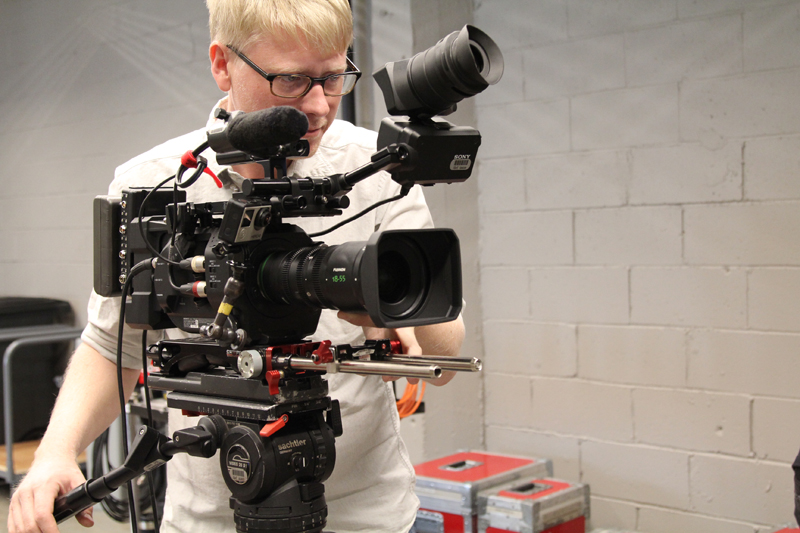 This is an exciting release from Fuji that has gotten some major buzz around town. The form factor, weight (or lack of), zoom range, T-stop, and price are all enticing. I think the Fuji MK 18-55mm will be a lens that can work into all kinds of productions. There is also a companion lens, the T2.9 Fuji MK 50-135mm, coming later this year. Both lenses are equal size and weight. This will make for a nice pairing across a wide focal length range.
This is an exciting release from Fuji that has gotten some major buzz around town. The form factor, weight (or lack of), zoom range, T-stop, and price are all enticing. I think the Fuji MK 18-55mm will be a lens that can work into all kinds of productions. There is also a companion lens, the T2.9 Fuji MK 50-135mm, coming later this year. Both lenses are equal size and weight. This will make for a nice pairing across a wide focal length range.
The Fuji MK 18-55 is an extremely lightweight lens, but solidly built. Weighing in at just over 2 lbs, it balances well with lighter-weight cameras like the Sony FS7 and FS5. It will also be a nice addition to the Sony a7SII, giving cinema style operation to a camera that otherwise would have difficulty supporting such a lens style. The lens itself is fully manual, with no zoom servo, or auto-focus. Each ring for focus, zoom and iris are equipped with industry-standard 0.8 film pitch gears, which allows for easy integration with current follow focus and motorized zoom and focus controllers. The compact, yet comfortable spacing of the focus, zoom and iris rings make it an easy lens to operate when shooting handheld. The focus barrel offers 200° of rotation, which on a lens of this size, is a pretty long throw. This allows for very precise focusing. The lens has a standard 85mm front when interfacing with mattebox systems. Included with the lens is a rubber lens shade, that is nice when not using filtration in front of the lens.
GEOMETRY
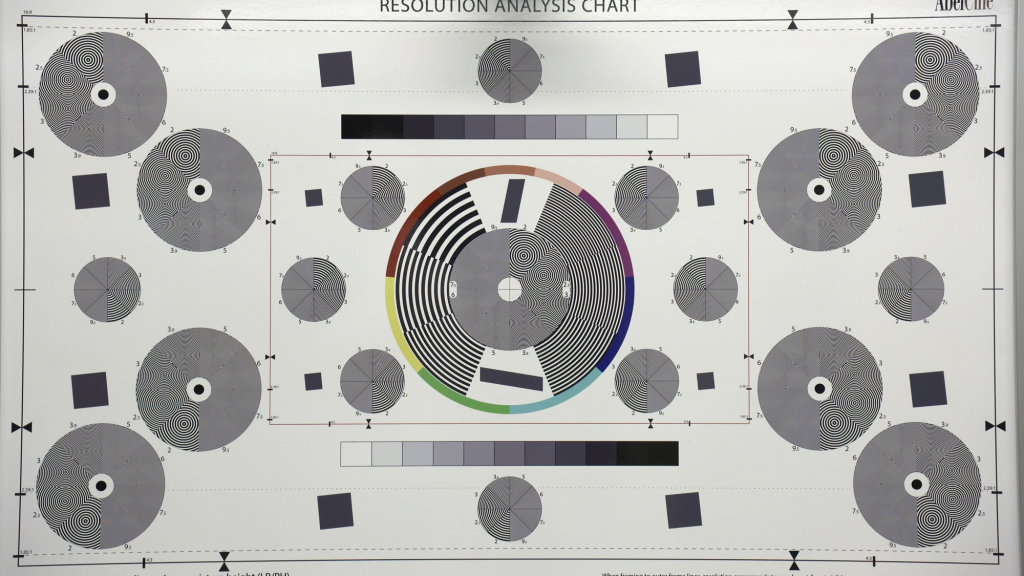 In the studio, we shot a resolution chart with the Fuji MK 18-55 at 35mm, a consistent “normal” focal length achievable by every lens in the test. If you observe the outermost lined box, you can see there is a slight pincushion effect, where the vertical and horizontal lines bend in slightly. The pincushioning is equal both vertically and horizontally. This is normal though, and the same effect is rendered in almost all of the lenses we tested. Click the image, or here, to see an expanded view.
In the studio, we shot a resolution chart with the Fuji MK 18-55 at 35mm, a consistent “normal” focal length achievable by every lens in the test. If you observe the outermost lined box, you can see there is a slight pincushion effect, where the vertical and horizontal lines bend in slightly. The pincushioning is equal both vertically and horizontally. This is normal though, and the same effect is rendered in almost all of the lenses we tested. Click the image, or here, to see an expanded view.
EDGE BRIGHTNESS
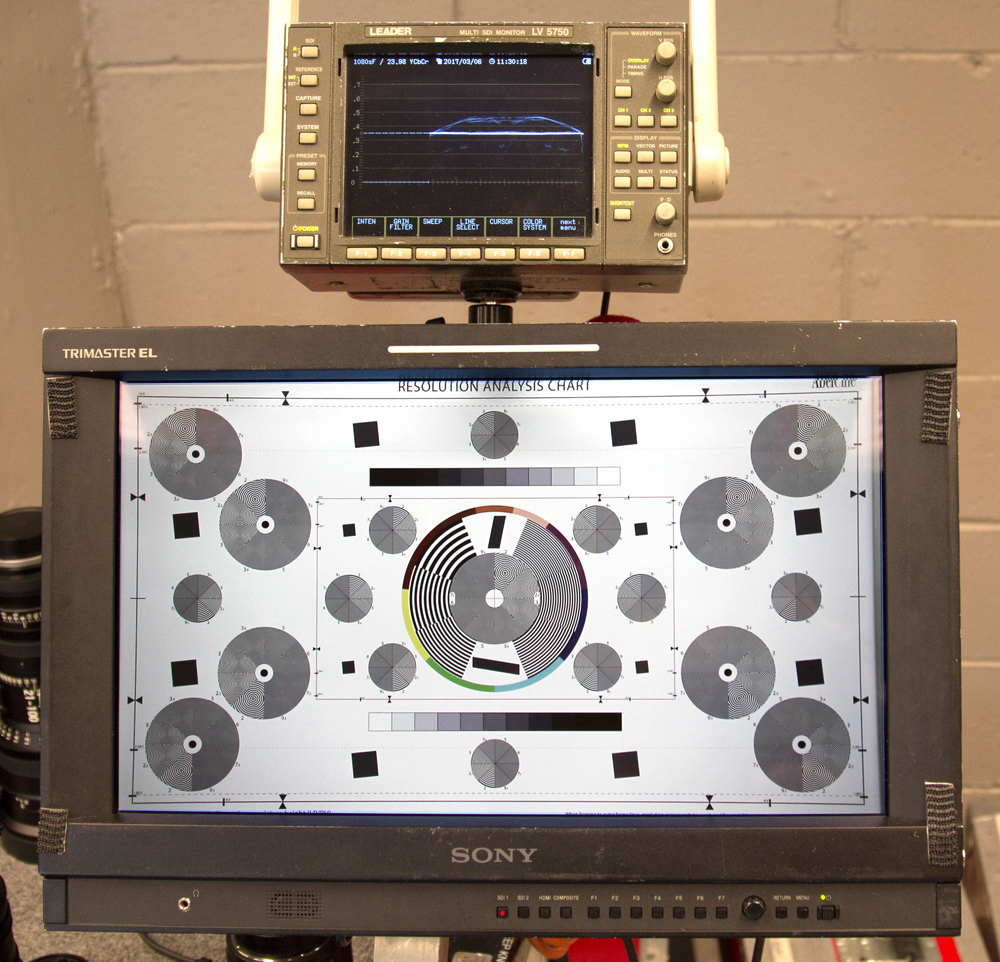 Wide open at a T2.9, the lens has some significant vignetting, as you can see by the waveform. The falloff still remains at T4, but by T5.6, the edge brightness evens out and holds through the rest of the aperture range. Download screen captures of all waveforms here.
Wide open at a T2.9, the lens has some significant vignetting, as you can see by the waveform. The falloff still remains at T4, but by T5.6, the edge brightness evens out and holds through the rest of the aperture range. Download screen captures of all waveforms here.
SHARPNESS
Overall, the lens is very sharp. There is no perceivable sharpness falloff on the outer edges and any T stop. By T4, the lens achieves its maximum sharpness and continues to hold through the rest of the aperture range. Download full resolution screen captures of all T-stops here.
CHROMATIC ABERRATION
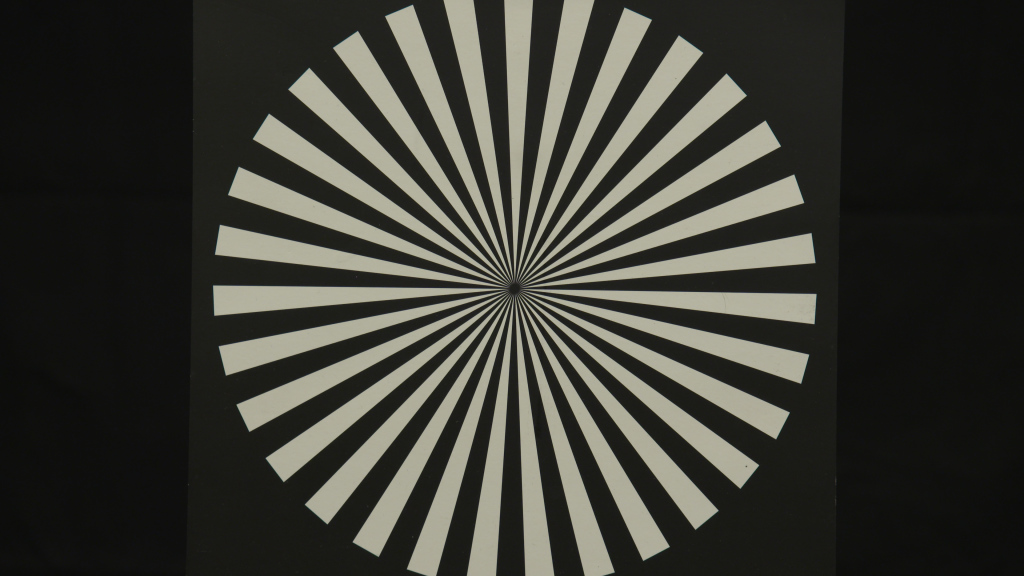 If you look at the edges of the slightly off-kilter black boxes scattered throughout the resolution chart, or at the center of a star chart, you can check for chromatic aberration. This is also referred to as “color fringing,” where the red, green and blue channels pixelate on sharp lines and render an outer color glow to small, high-contrast objects, like backlit tree branches. There is no discernible fringing with the lens.
If you look at the edges of the slightly off-kilter black boxes scattered throughout the resolution chart, or at the center of a star chart, you can check for chromatic aberration. This is also referred to as “color fringing,” where the red, green and blue channels pixelate on sharp lines and render an outer color glow to small, high-contrast objects, like backlit tree branches. There is no discernible fringing with the lens.
COLOR
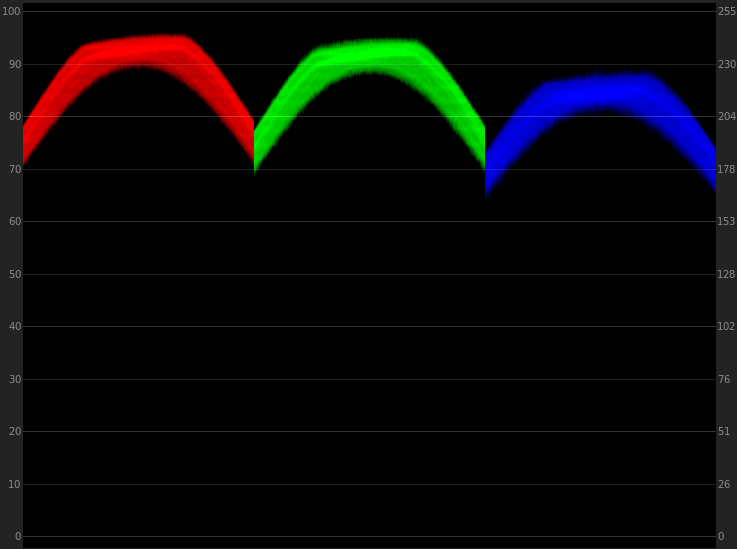 |
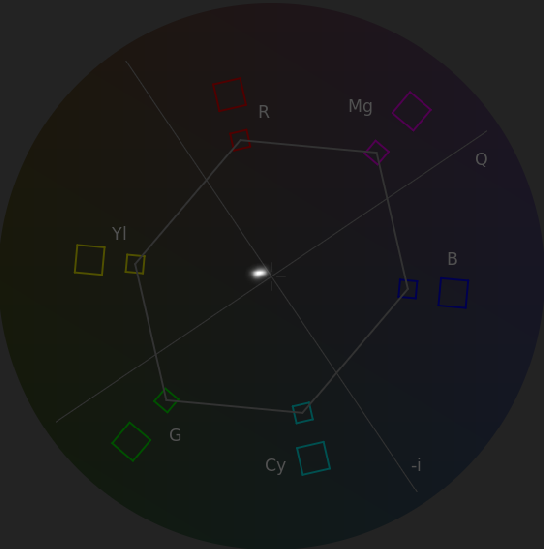 |
The Fuji MK 18-55 renders color and contrast very nicely. It’s a subtle lens that doesn’t influence the look of the image. The color is pretty neutral, while skewing slightly towards yellow. To test this, we first white balanced the camera with no lens on the camera. This gives us a pure white in which to see the color shift of the lens. We then put the Fuji MK 18-55 on the camera to see how it looks.
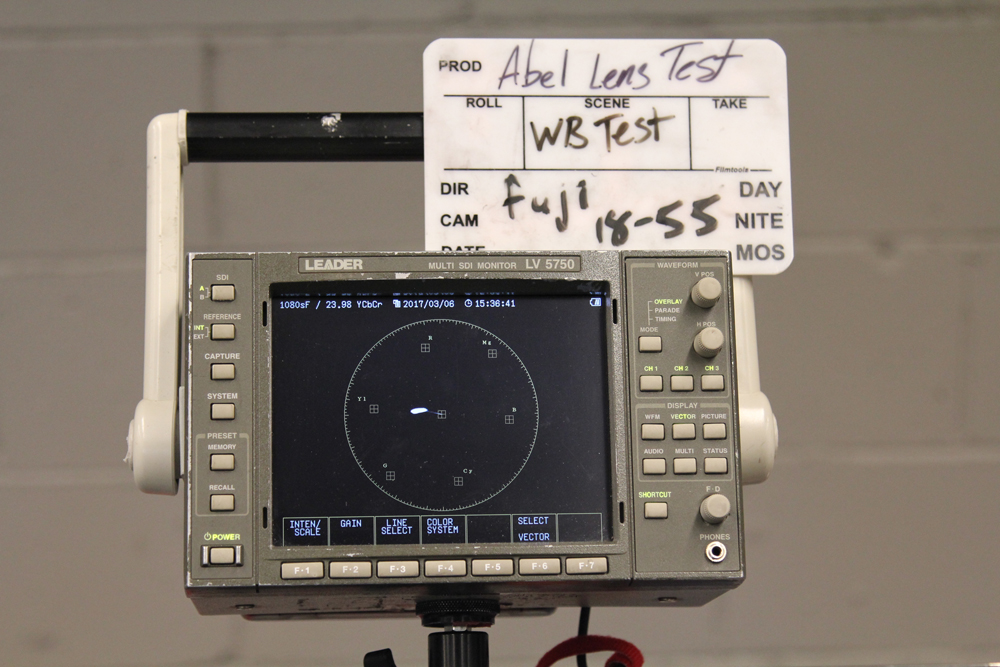 |
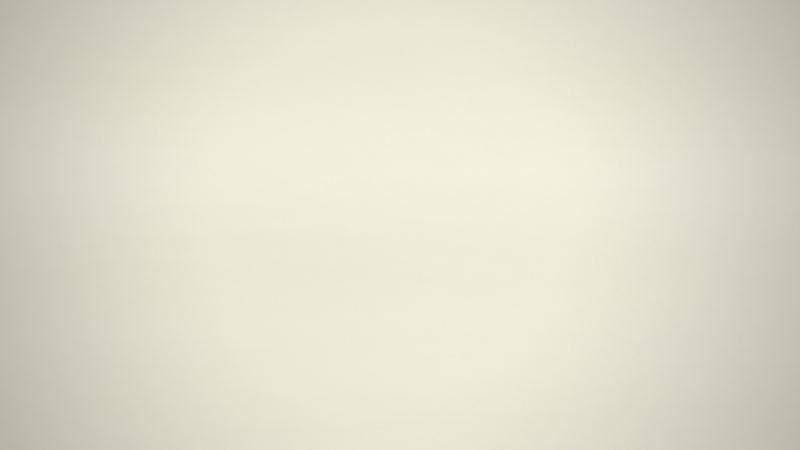 |
While looking at the white card with the Fuji MK 18-55, you can see on the waveform RGB parade the red and green saturations are heightened. The curve to each channel is attributed to the edge brightness falloff we observed earlier. On the vectorscope, you can see how the color pushes straight towards the yellow spectrum.
 In the interview frame, you can see in this scene that the lens has lower contrast, and renders a nice, pleasing neutral image. While the color skews yellow, the lens renders skin tones beautifully.
In the interview frame, you can see in this scene that the lens has lower contrast, and renders a nice, pleasing neutral image. While the color skews yellow, the lens renders skin tones beautifully.
BREATHING
To test the lens breathing, I rolled the focus between the background and foreground. As the lens rolls through focus, I watched how the columns on the right side of frame scale, or zoom, as I focus. In the first interview frame, shot at 35mm, there is almost no zooming of the image. The second frame was shot at 50mm, and again, there is next to no movement. I also tested the breathing in the pool scene at the wide and tight end of the lens to see how it looks in action. The lack of breathing makes the lens feel snappy and precise, giving a high production feel to your rack focus shots.
MINIMUM FOCUS
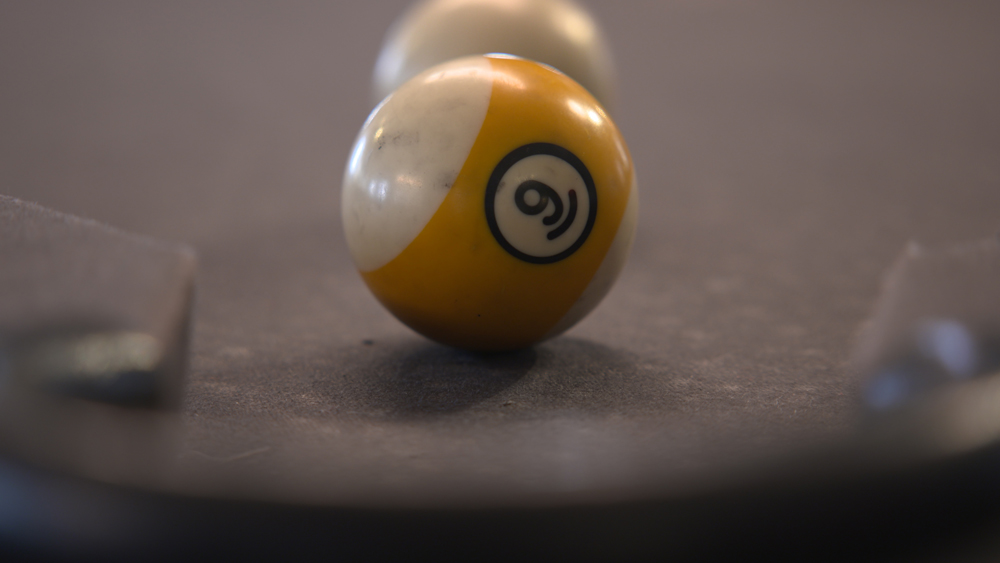 |
 |
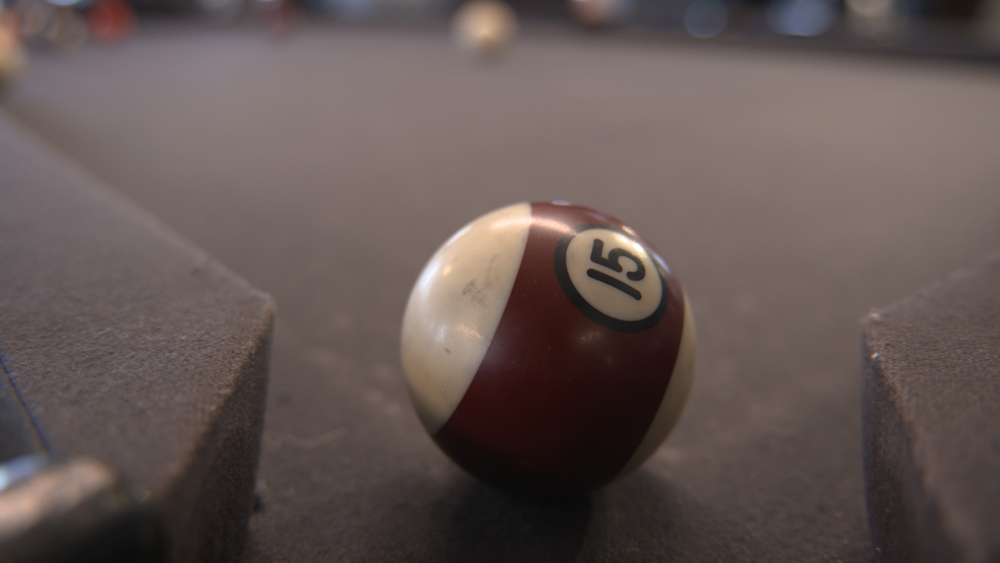 |
The minimum focus on the Fuji MK 18-55 is 2.8’. At the wide end of the lens, that puts you pretty far from the object. But the Fuji MK 18-55 also features a macro setting, which drops the minimum focus to 1.25’ at 18mm. When you factor in the length of the lens, that puts the focus point inches from the front element.
When you zoom the lens with macro engaged, the minimum focus distance no longer holds at 1.25’. At 55mm with macro focusing engaged, the frame size is almost identical to that at 18mm. The only difference is more depth compression in the image.
In everyday shooting, 2.8’ will generally be fine. But having the option to pop into macro focus for select close-focus shots is incredibly helpful.
BOKEH
“Bokeh” refers to the look of the out-of-focus elements within a shot. The roundness and shape of out-of-focus objects comes from the number of iris blades in a lens. The more blades you have, the rounder the look.
The Fuji 18-55 has 9 iris blades in the lens. The out-of-focus cafe bulbs in this scene are very smooth with minimal “edges.” There does appear to be a minimal cat eye effect, where the tops and bottoms come to a slight point.
LENS FLARES
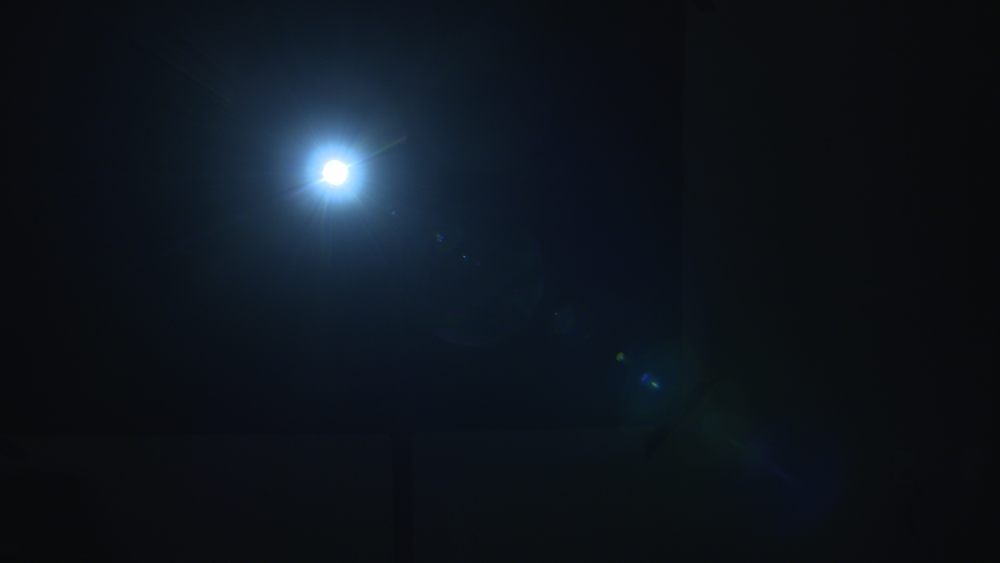 |
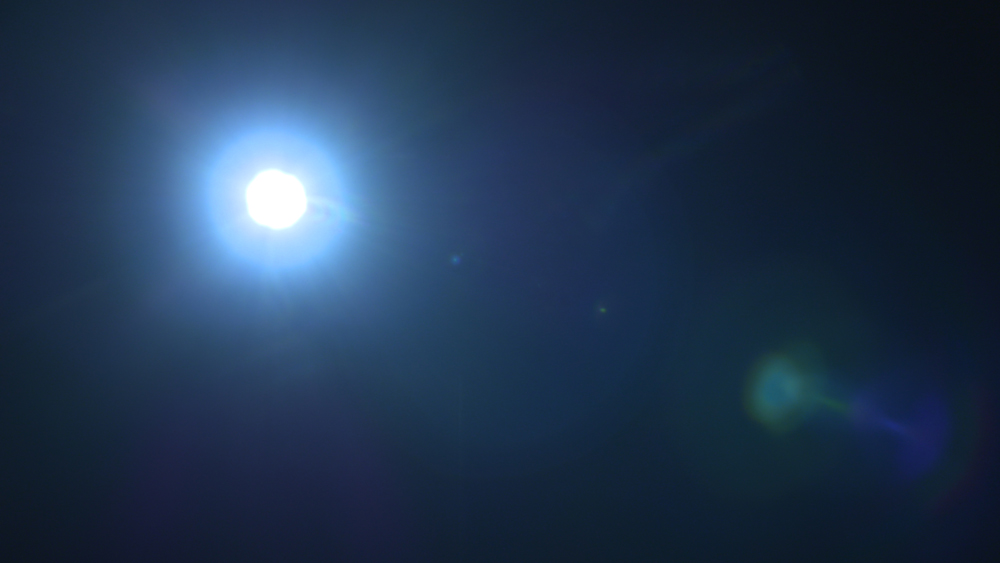 |
This lens is quite flare resistant, due to the modern coating on the lens. This is helpful on documentary shoots where you can’t control the natural lighting or have the ability to flag the lens. Looking at the lens at 18mm, there is a white, yellow star around the light itself. In the trailing flare, there are numerous, very tight, conical elements that are blue and green in color. These cone shapes are actually the light bouncing off the individual lens elements. At 55mm, there is an interesting flash of intense blue, then green, then yellow, followed by blue halos with soft green conical elements. That same intense color pattern appears as the lens drifts away from the light. The traces of comet trails remain for awhile, even after the rest of the flare has completely dissipated.
CONCLUSION
The Fujinon MK 18-55mm Zoom is a great handheld verité lens. The mid-range focal lengths give you optimal coverage for shooting intimate action with your subjects. The lens is also lightweight enough to handhold all day without getting tired. This lens is only available in Sony E-mount (with an X-mount version coming next year), so you are limited to the cameras you can use it with. But for those working with the Sony FS7, FS5 and a7S II, you will definitely want to consider this lens. The lens is incredibly sharp, which makes it a great companion lens when paired with the Cabrio 19-90 or 20-120 (tested in this series as well). With the constant T2.9 aperture throughout the zoom range, you don’t have to worry about keeping the lens on during night shots. The color is nice and neutral, with lower contrast than other lenses we tested. The lens doesn’t breathe at all. The bokeh is quite pleasing and subtle, and the coating on the lens minimizes flares.
I hope you found this lens test useful, and be sure to check out the other lenses in the Behind the Lens – A Look at Documentary Zooms series.















